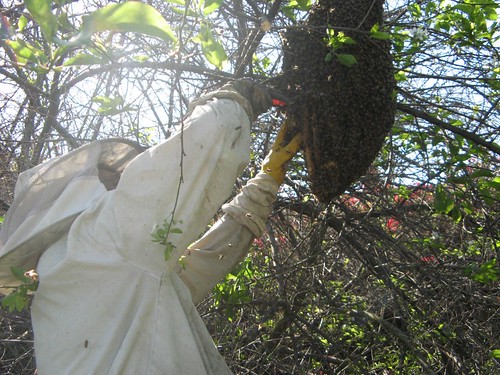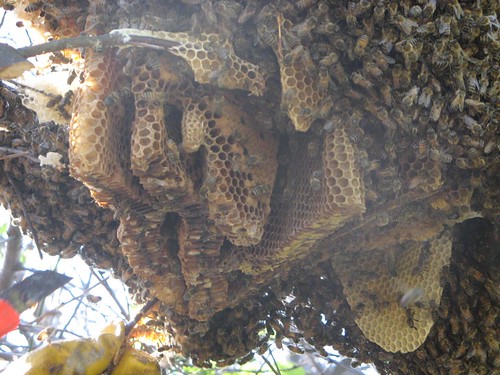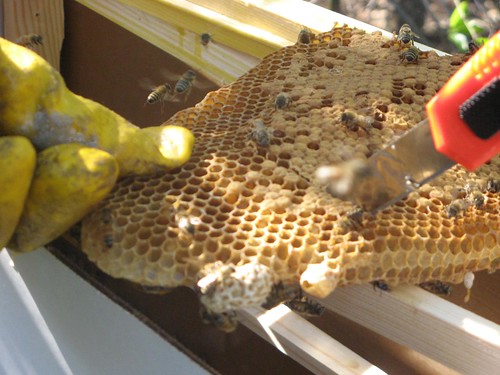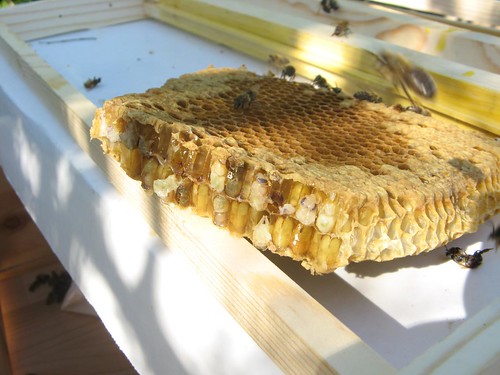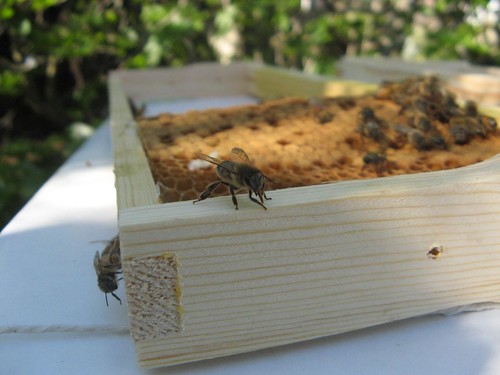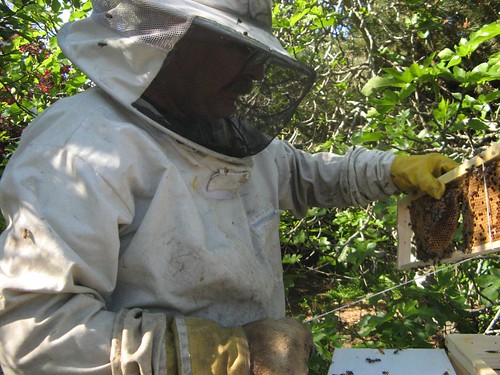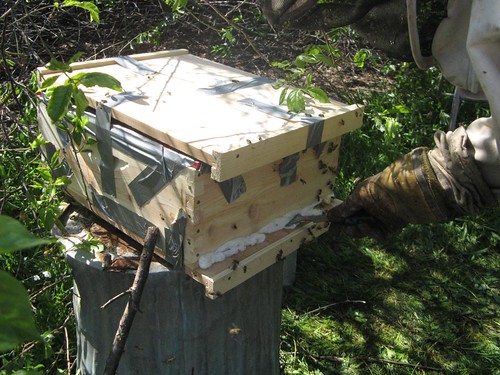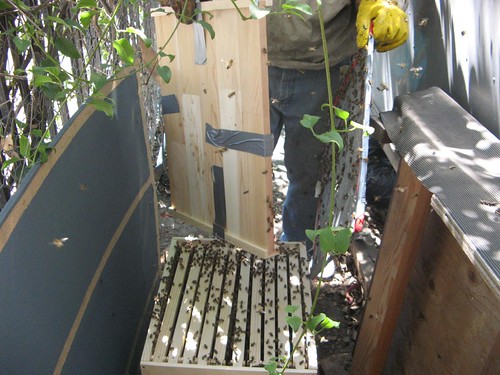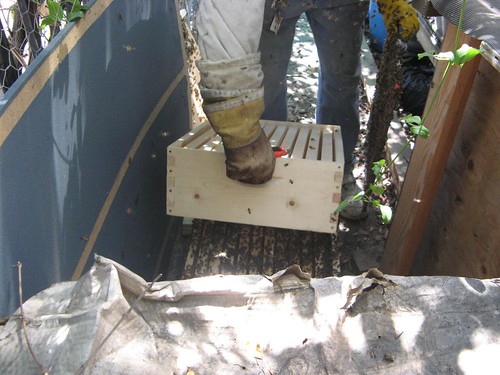
Alone they hold their progeny in common,
Alone they share the housing of their city,
passing their lives under exalted laws,
Alone they recognize a fatherland
And the sanctity of a home, and provident
For coming winter set to work in summer
And store their produce for common good.
For some attend to victuals, covenanting
To labor in the field; some stay at home
And in its confines lay the first foundations
Of the combs with daffodil tears for propolis
And sticky glue from tree bark, then suspend
The clinging wax; others initiate
The adolescent hopefuls of the tribe;
Some pack the purest honey and distend
The cells with liquid nectar; some by lot
Obtain the post of sentries by the gates
To take their run at watching for rain and clouds
Or taking in the loads from foragers
Or, falling in for action, drive the drones,
The pack of shirkers, from the common fold.
The younger drag themselves home exhausted late at night,
their thighs laden with thyme, for far and wide
They fed on arbutus, on pale green willow,
on garland flowers and yellow crocuses
And sticky lime and dusky asphodel.
All toil together and all rest together.
At dawn they pour from the gates - no loitering -
Likewise when finally the evening star
Warns them to quit their pastures in the fields,
Then they make homeward, then they rest their bodies,
A hum is heard of gossiping on doorsteps.
At last hen all are tucked in bed, a silence
Falls for the night, and over their tired limbs
A well earned slumber steals.
But when there's rain impending they do not range
So far from the stalls, nor will they trust the weather
When winds from the east are rising, but keep safe
Under their city walls and only venture
Brief sorties to get water or tiny pebbles
With which, as boats in a tossing sea take ballast,
They balance themselves in the unsubstantial clouds.
Another custom that the bees approve
Will make you marvel: they forbear to indulge
In copulation or to enervate
Their bodies in Venus' ways, nor do they bare
Their young in travail, but themselves, unmated,
Gather their children in their mouths from leaves
And fragrant herbs, themselves supply their king
And infant citizens, and recreate
Their halls and waxen kingdoms. Often too
Wandering amid rough rocks they bruise their wings
And sacrifice their lives beneath their burdens,
Such is their love of flowers and such their pride
In generating honey. Thus it is
That though a narrow span of life awaits
Each individual (for none of them
Outlive their seventh summer) yet the stock
Remains immortal, and for many years
The house survives in fortune, and its annals
Count generation upon generation.
Led by these signs and by these instances
Some have affirmed that bees posses a share
Of the divine mind and drink ethereal draughts;
For God, they say, pervades the whole creation,
Lands and the sea's expanse and the depth of sky.
Thence flocks and herds and men and all the beasts
Of the wild derive, each in his hour of birth,
The subtle breath of life; and surely thither
All things at last return, dissolved, restored.
And there is no room fro death: alive they fly
To join the stars an mount aloft to Heaven.






